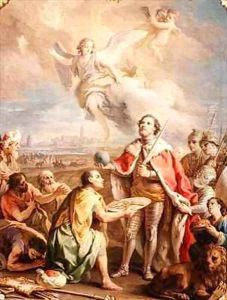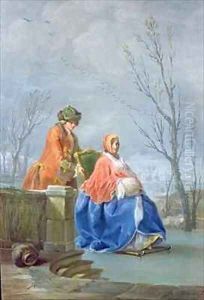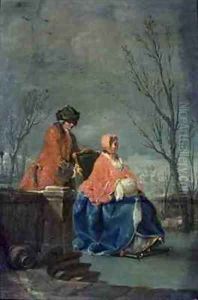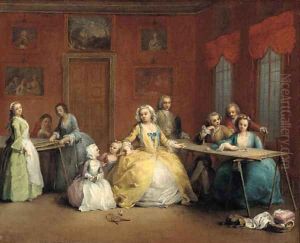Charles-Joseph Flipart Paintings
Charles-Joseph Flipart was a French engraver and painter who was born in 1721 in Paris. He hailed from an artistic family; his father, Jean Charles Flipart, was an engraver, and his brother, Jean Jacques Flipart, also pursued a career in the same field. This familial background provided Charles-Joseph with an early exposure to the arts, and he was trained in the artistic traditions of the era.
Flipart is particularly known for his talents in engraving, and he achieved considerable skill in this medium. His work often displayed the finesse and precision that were characteristic of the Rococo style, which was prevalent during his lifetime. Rococo was known for its elaborate ornamentation, intricate detailing, and playful themes, elements that can be found in Flipart’s engravings.
In the 1740s, Flipart traveled to Italy, which was a common practice among artists of the time who wished to study the Renaissance masters and the burgeoning trends in Italian art. During his stay in Venice, he was influenced by the works of the Tiepolo family, particularly Giovanni Battista Tiepolo, who was renowned for his frescoes and paintings. Flipart's exposure to Venetian art had a lasting impact on his work, as he began to incorporate the lightness, color, and elegance of the Venetian style into his own engravings.
Upon his return to France, Flipart continued his work as an engraver but also worked as a painter. He became a part of the Académie Royale de Peinture et de Sculpture in 1754, which was a significant recognition of his artistic abilities and contributions. His engravings and paintings during this period often depicted scenes from daily life, portraiture, and subjects from classical antiquity, reflecting the tastes of the French aristocracy and the intellectual circles of the time.
Charles-Joseph Flipart's contribution to art is most remembered through his engravings, which continue to be appreciated for their technical excellence and artistic beauty. He died in 1797, leaving behind a body of work that offers important insights into the Rococo period and the cultural exchanges between France and Italy during the 18th century.



